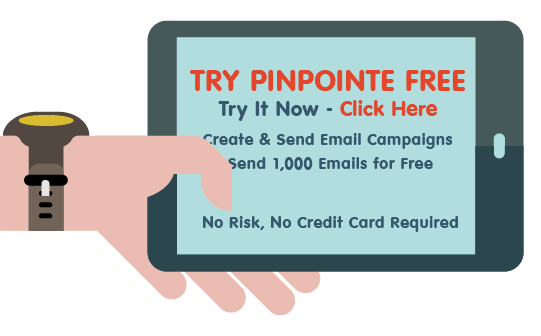Do You Have A Mobile-Friendly Website?
 You've learned the importance of a mobile friendly email and have figured out how to get your subscribers to open your email on their mobile device and respond to your call-to-action (which lands them on your website). A website visit is an important factor in determining if your email subcriber moves on to the next cycle of the sales proccess or not. Therefore, you're going to want to make sure that your site is mobile-friendly. Yet, a site that renders properly on mobile devices is not enough these days – SPEED and USABILITY are key when creating the best possible mobile-friending experience. Therefore, you'll want to optimize these two main things for your mobile visitors. If a website takes a long time to load or is difficult to use, visitors on mobile devices will leave in a heartbeat, and potentially visit your competitor’s (mobile-optimized) websites instead.
You've learned the importance of a mobile friendly email and have figured out how to get your subscribers to open your email on their mobile device and respond to your call-to-action (which lands them on your website). A website visit is an important factor in determining if your email subcriber moves on to the next cycle of the sales proccess or not. Therefore, you're going to want to make sure that your site is mobile-friendly. Yet, a site that renders properly on mobile devices is not enough these days – SPEED and USABILITY are key when creating the best possible mobile-friending experience. Therefore, you'll want to optimize these two main things for your mobile visitors. If a website takes a long time to load or is difficult to use, visitors on mobile devices will leave in a heartbeat, and potentially visit your competitor’s (mobile-optimized) websites instead.
Speed: Website Load Time Affects Mobile Response
The load time of your website is affected by a number of website elements. Gomez found that 74% of users would only wait five seconds for a web page to load before leaving it. If you manage to load your site under five seconds, 46% of consumers will not return to the mobile site if it didn’t load properly on their first visit. To ensure that your web page loads correctly and in a timely manner, avoid the following heavy material:
-
Scripts called by your website, including Cascading Style Sheets, Javascripts, and Java files.
These can be a part of your website’s design template / theme, plug-ins, add-ons, analytics programs, and widgets such as your social media profile boxes and sharing buttons. - Large image files (jpg, png, and gif).
- Videos loading from your server or off site.
5 Changes to Make your Website Load Faster on a Mobile Device
The best way to ensure your website will load as quickly as possible is to include only the most necessary connections, add-ons, widgets, and plug-ins. For example…
- If you have included scripts for five separate analytics tools on your website, but you really only use the data from two of those tools for your business, consider removing the additional three.
- If you have widgets on your sidebar that pull in your latest tweets, Facebook posts, Pinterest pins, and similar updates, consider replacing them with a standard logo image and link to your profile or page instead to reduce your website’s need to load data from several different other websites. If Twitter is down, it will slow down your entire website based on the one widget.
- If you have 50+ plug-ins on your WordPress website, figure out which ones are absolutely necessary, which ones could be replaced by code, and which ones are cosmetic and not vital to your website’s overall functionality.
- If you have a lot of images on your website, look at the size of those images. Unless you are a fine art photographer, you don’t need your images to be uploaded at full resolution and size. Resize and optimize images as needed.
- If you have videos on your server, consider hosting them on outside services such as Amazon Web Services instead to put the load time on Amazon’s cloud instead of your server.
Not sure where to start?
Start by using the free Pingdom website speed testing tool. It will show you how your website’s load time ranks compared to other websites and exactly what files on your website take the longest to load. Use this tool to decide what website elements should stay and what should go.
Usability: 5 Methods to Increase Your Customers Satisfaction with Your Mobile Site
Next on the list of mobile optimization importance is usability. There are a few things you don’t want your mobile visitor to experience when they reach your website – a website that doesn’t load because it is all Flash, a website that needs to be ‘pinched’ and zoomed in order to read the content, and a website that is missing half of the most important information because only the important pages were optimized for mobile.
- Do not use a Flash-only website. This should be a given considering how many view the web on their mobile devices.
- Use a responsive web design. This is a design that proportions itself to fit any screen resolution. For example, if your website has a main content column and sidebar column on a desktop browser, it would have a content column followed by the sidebar column on a mobile browser. Every page on your website would continue to be displayed using a responsive web design.
- Create a mobile-only website. This is a website that is unique to mobile visitors, usually on a m.domain.com sub-domain on your website. The plus for this method is that you can custom tailor each page on your mobile site to mobile visitors, leaving out any unnecessary elements. The downside is any pages you do not add to your mobile-only website will be inaccessible to mobile visitors unless they choose to switch to the full site.
- Install a plugin. Self-hosted WordPress users can download plug-ins such as WPtouch to quickly create a mobile-friendly version of their website. This would mean you wouldn’t have to change your main website’s design at all and not have a separate web address for your mobile-only website.
- Another thing to consider with a mobile website is popups. If you use a popup to advertise new products or build your mailing list, you will need to test them (or potentially disable them) for mobile visitors. The issue is that many popups are hard to resize on a mobile screen, thus your visitor may not be able to get to your main content because they canít shut off your popup.
Testing
Ensure You Are as Happy with Your Site as Your Customers Will Be.
No matter how you choose to optimize your website for mobile visitors, be sure to do plenty of testing, especially on your key landing pages, shopping cart pages, and other pages that generate business. They need to be easy to read, easy to scroll through, and easy to take action upon.
Try signing up for your list on your squeeze pages, making purchases off of your sales pages, and going through your entire shopping cart on a mobile device. Take the ideal customer paths throughout your website in order to fix any problems before you lose a lead or a sale. Ensuring your mobile website matches the needs of your customers brings a satisfaction to customers and encourages them to initiate, complete, and follow up on their purchases.
How to Increase Your Presence in the Mobile Marketplace
With the increasing prominence of mobile devices in email marketing, your campaign can no longer be designed solely with the desktop viewer in mind. The following 5 tips are highlighted to easily identify ways to optimize your email marketing services for mobile users.
- Utilize the subject line and first headline of your email to grab your reader’s attention, increasing the likelihood of it being opened.
- Having a sleek and simple design that loads fast and is enjoyable to read on a responsive template will ensure that your customer clicks through to further investigate your product and company.
- Ensure your site is mobile friendly. This can be done by increasing its speed and streamlining its usability. Remove any clutter on your site that unnecessarily increases load time. Build your site on a responsive template and considering removing popups that increase the difficulty of navigating your site. If you do not want to edit your existing site, a mobile only site may also be a good fit for your company.
- Sometimes there is a unique niche in the marketplace that allows your company to successfully implement a mobile app for your company’s product. If this is the case for your company, consider investing in generating a mobile app.
- Test all changes you implement on various mobile devices to ensure you are as happy with your final product as your customer will be.
Remember, the times they are a-changin’ and it is your responsibility to change your company to fit the ever evolving marketplace.
Sources
http://www.campaignmonitor.com/guides/email-marketing-trends/
http://60secondmarketer.com/blog/2014/02/02/21-tips-optimize-email-mobile/
http://www.bluefountainmedia.com/blog/how-to-optimize-email-for-mobile-devices/










